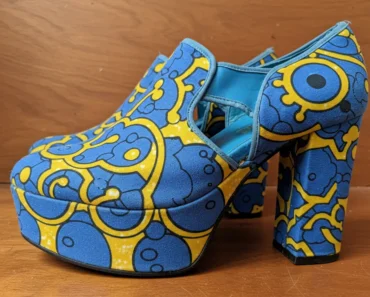21 Stunning Bixie Haircut Ideas That Will Transform Your Look
The perfect marriage of bob and pixie that’s revolutionizing modern hairstyling
The Bixie haircut has emerged as the most requested style in salons across the globe this year, and for good reason. This brilliant fusion of the classic bob and edgy pixie creates a look that’s both sophisticated and playful, offering the best of both worlds for anyone seeking a fresh, modern cut that doesn’t sacrifice versatility for style.
What Exactly Is a Bixie Haircut?
The Bixie haircut represents a revolutionary approach to short hair that breaks traditional boundaries. This innovative style typically falls between chin and ear length, combining the structured elegance of a bob with the textured, piece-y finish of a pixie cut. The result creates a dynamic silhouette that moves beautifully and adapts to various styling preferences.
Unlike conventional short cuts that often force you into one specific look, the Bixie offers remarkable flexibility. The length sits perfectly in that sweet spot where you can still tuck hair behind your ears, create subtle waves, or spike it up for an edgier vibe. This adaptability has made it particularly popular among professionals who need a polished weekday look but want something more relaxed for weekends.
The genius of this cut lies in its layering technique. Master stylists create graduated layers that add natural volume and movement without requiring extensive daily styling. The back typically features shorter, stacked layers that gradually increase in length toward the front, creating a flattering frame around the face. This strategic cutting method ensures the style grows out gracefully, maintaining its shape for weeks longer than traditional pixie cuts.
What sets the Bixie apart from other hybrid cuts is its emphasis on texture. Rather than the blunt lines often associated with bobs or the super-short uniformity of pixies, the Bixie embraces a more organic, lived-in feel. Stylists use point cutting and texturizing techniques to create soft, feathery ends that move naturally and catch light beautifully.
The Rise of the Bixie: Why This Cut Dominates 2025
The Bixie haircut’s meteoric rise to prominence isn’t just another fleeting trend. This style addresses several key concerns that modern individuals face when choosing a haircut. The post-pandemic era has shifted priorities toward practical yet stylish choices, and the Bixie delivers on both fronts spectacularly.
Social media influence has played a significant role in popularizing this versatile cut. When celebrities like Florence Pugh, Zoë Kravitz, and Emma Watson debuted their Bixie variations, the style exploded across Instagram and TikTok. The hashtag #BixieHaircut has garnered over 2.3 billion views on TikTok alone, with thousands of transformation videos showcasing the cut’s dramatic yet wearable appeal.
The economic factor cannot be ignored either. With salon visits becoming increasingly expensive, clients want cuts that maintain their shape longer and require less frequent touch-ups. The Bixie’s strategic layering means it grows out more gracefully than traditional short cuts, extending the time between necessary trims to 8-10 weeks instead of the usual 4-6 weeks required for pixie maintenance.
Climate change and increasing awareness of water conservation have also influenced hair trends. The Bixie requires minimal washing and styling time, using less water and fewer heat-styling tools. This eco-conscious aspect appeals to environmentally aware consumers who want to reduce their carbon footprint without sacrificing style.
The work-from-home revolution has created demand for hairstyles that look polished on video calls without requiring elaborate morning routines. The Bixie’s natural texture and movement mean it looks camera-ready with minimal effort, making it ideal for the hybrid work environment that defines modern professional life.
Key Benefits of the Bixie:
- ✓Versatile styling options for any occasion
- ✓Lower maintenance than traditional pixie cuts
- ✓Suits virtually every face shape and hair texture
- ✓Grows out gracefully without awkward phases
21 Bixie Haircut Variations to Consider
1. The Classic Textured Bixie

This foundational style features evenly distributed layers throughout, creating natural movement and body. The classic textured Bixie works exceptionally well for those with fine to medium hair density, as the layering technique adds apparent fullness without weight. Stylists typically cut this variation with a slight angle, longer in front and gradually shorter toward the nape, maintaining enough length to experiment with different styling methods.
2. The Asymmetrical Bixie
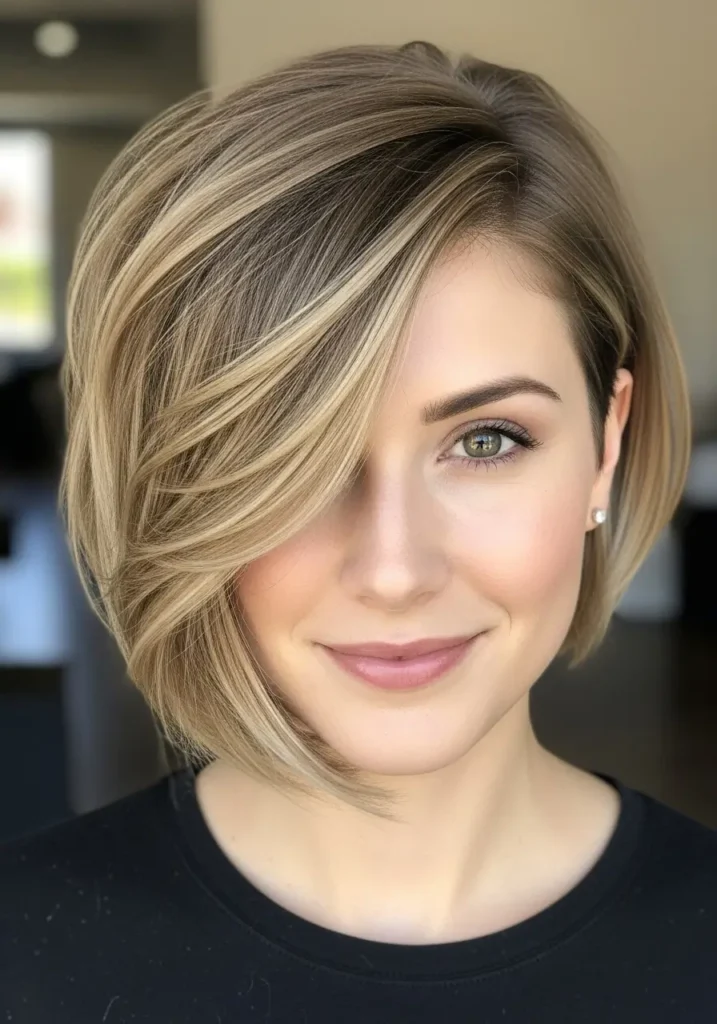
For those seeking a bolder statement, the asymmetrical Bixie offers an artistic twist on the traditional cut. One side remains notably longer than the other, creating visual interest and allowing for dramatic styling options. This variation particularly suits oval and heart-shaped faces, as the asymmetry can balance facial features beautifully.
3. The Curly Bixie
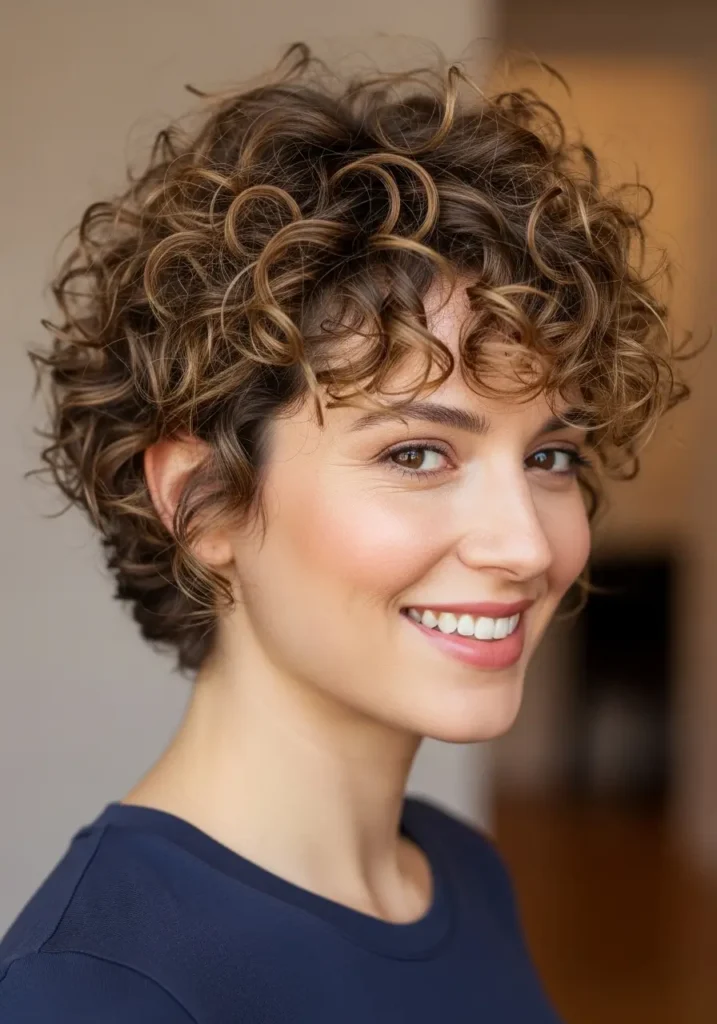
Natural texture gets its moment with the curly Bixie, which celebrates rather than fights against curl patterns. The key lies in strategic layering that works with your specific curl type, whether loose waves or tight coils. Dry cutting techniques ensure each curl sits perfectly, creating a shape that maintains definition without frizz.
4. The Undercut Bixie

Adding an undercut element transforms the Bixie into an edgier statement piece. The contrast between the longer top layers and closely cropped sides creates striking visual impact while reducing bulk for those with thick hair. Hidden undercut designs offer a secret rebellious element that can be revealed or concealed as desired.
5. The Shaggy Bixie

Channeling 1970s rock-and-roll vibes, the shaggy Bixie incorporates choppy layers and piece-y bangs for a deliberately undone aesthetic. This variation works particularly well for those who prefer a wash-and-go lifestyle, as the intentionally messy texture looks best when allowed to air dry naturally.
6. The Sleek Bixie

Minimalist and sophisticated, the sleek Bixie features subtle layering that creates a smooth, polished finish. This variation suits professional environments perfectly, offering a refined appearance that transitions seamlessly from boardroom to evening events with simple styling adjustments.
7. The Bixie with Curtain Bangs

Incorporating curtain bangs adds a romantic, face-framing element to the Bixie structure. These longer, swept-aside bangs soften angular features and provide styling versatility, allowing you to change your look dramatically by simply adjusting how the bangs fall.
8. The Choppy Bixie

Maximum texture defines the choppy Bixie, where point cutting creates dramatic piece-y sections throughout. This high-impact style adds instant edge and works beautifully with creative color placement, allowing for peek-a-boo highlights or bold color blocks.
9. The Graduated Bixie

Precision cutting creates a graduated effect where layers stack beautifully to form a rounded silhouette. This technical approach requires skilled execution but rewards with a shape that maintains its structure even as it grows, making it ideal for those who stretch time between salon visits.
10. The Bixie Bob Hybrid

Leaning more toward bob territory, this variation maintains additional length while incorporating pixie-inspired texturing at the crown and back. The result offers maximum styling flexibility while still capturing that effortless Bixie spirit.
11. The Pixie-Forward Bixie

Shorter overall but maintaining strategic length at key points, this variation appeals to those ready to embrace a more dramatic change. The pixie-forward Bixie requires less daily maintenance while still offering enough length for basic styling variations.
12. The Bixie with Side Swept Bangs

A diagonal fringe adds sophistication and helps balance facial proportions. Side swept bangs work particularly well for square and round face shapes, softening strong jawlines while creating an elongating effect.
13. The Tousled Beach Bixie
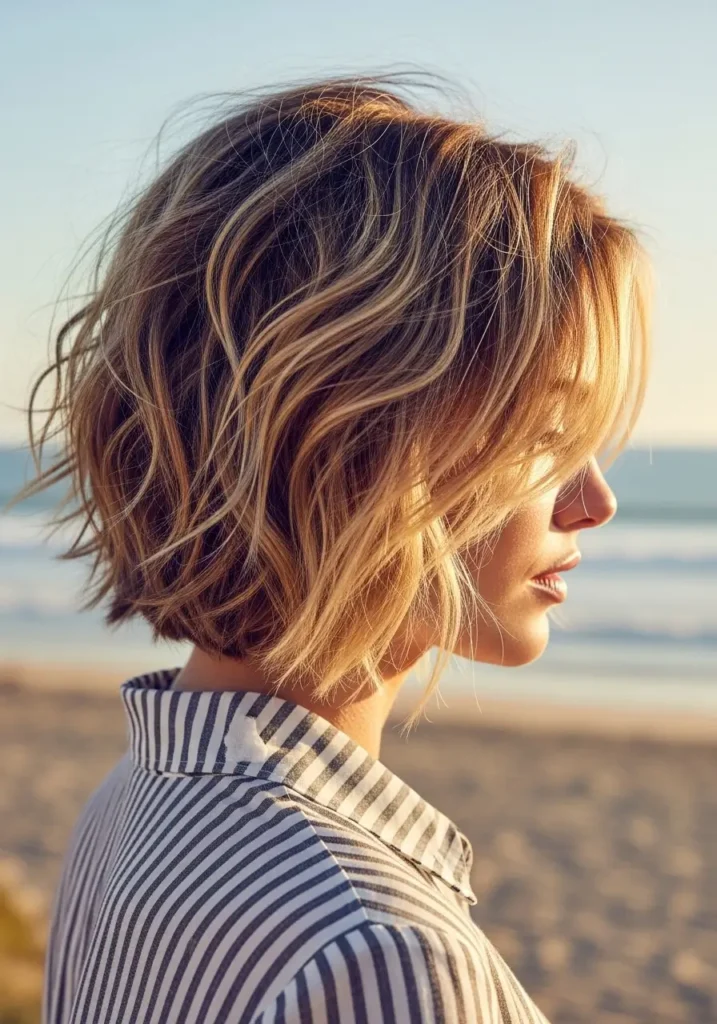
Embracing natural texture, this variation mimics that coveted beach hair effect in a shorter format. Salt spray becomes your best friend with this style, enhancing natural wave patterns and creating effortless volume.
14. The Bixie with Baby Bangs
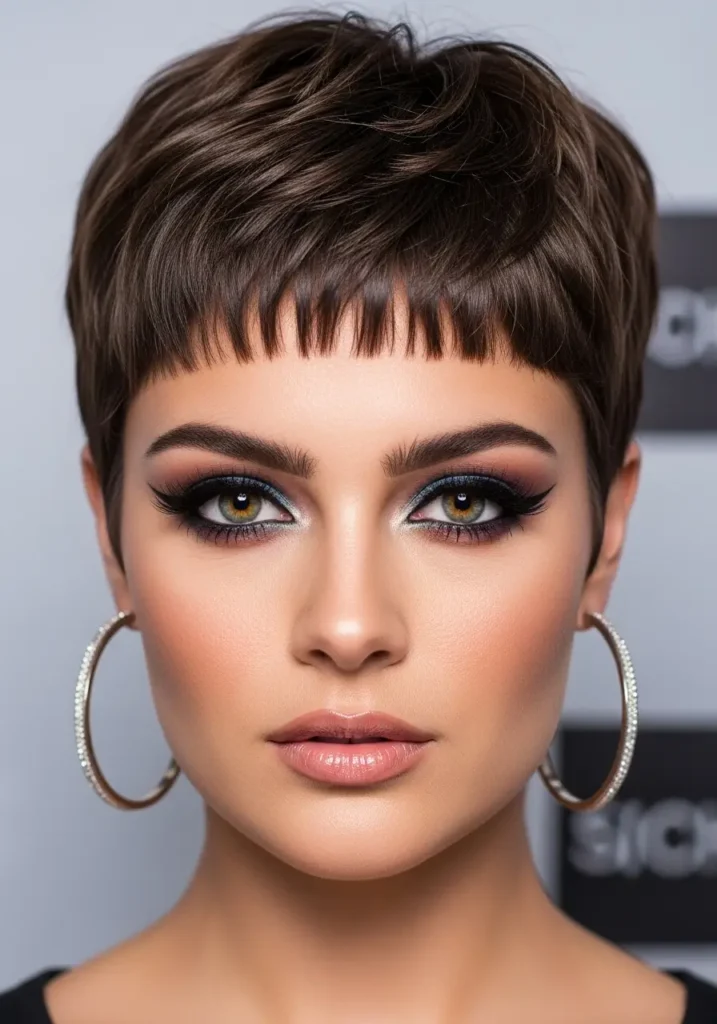
Micro bangs add a fashion-forward element to the Bixie structure. This bold choice requires confidence but delivers major style impact, particularly when paired with statement makeup or bold accessories.
15. The Layered Bixie with Face-Framing Pieces

Strategic longer pieces around the face create a flattering frame while maintaining the overall short silhouette. These face-framing sections can be styled forward for a softer look or swept back for a more polished appearance.
16. The Bixie with Hidden Color

Underneath sections feature bold color choices that peek through when styled or moved. This variation allows for creative expression in conservative environments, as the color remains hidden when hair is styled down.
17. The Vintage-Inspired Bixie

Drawing inspiration from 1920s finger waves and 1960s mod cuts, this variation incorporates retro styling elements into the modern Bixie framework. Pin curls and setting techniques create special occasion looks with Old Hollywood glamour.
18. The Bixie with Disconnected Layers

Bold, disconnected sections create dramatic visual interest and movement. This architectural approach to cutting requires precise technique but delivers a truly unique, customized result.
19. The Soft Bixie

Rounded edges and gentle layering create a feminine, approachable variation. This softer interpretation works beautifully for those transitioning from longer styles who aren’t ready for dramatic angles or edges.
20. The Bixie with Shaved Details

Incorporating shaved designs or patterns adds personalized artistic elements. These details can range from subtle lines to elaborate patterns, offering a way to make the style uniquely yours.
21. The Grown-Out Bixie

Embracing the transition phase, this variation celebrates the journey between cuts. Strategic trimming maintains shape while allowing overall length to increase, proving that growing out short hair doesn’t mean enduring awkward stages.
Related Post: Short Haircut Styles for Women: Top Trends and Tips for 2025
Finding Your Perfect Bixie Based on Face Shape
Understanding your face shape provides crucial guidance when customizing your Bixie haircut. While this versatile style suits nearly everyone, specific adjustments can enhance your natural features and create optimal balance.
Oval Face Shapes
Blessed with balanced proportions, oval faces can experiment with virtually any Bixie variation. The natural symmetry means you can play with asymmetrical cuts, bold bangs, or dramatic textures without worrying about throwing off facial balance. Consider trying more adventurous variations like the undercut Bixie or experimenting with baby bangs to make a statement.
Round Face Shapes
Creating the illusion of length becomes the primary goal for round faces. Opt for Bixie variations with height at the crown and longer pieces around the face. Asymmetrical cuts work particularly well, as do side-swept bangs that create diagonal lines. Avoid styles that add width at the sides; instead, focus on variations that elongate your silhouette.
Square Face Shapes
Softening angular features while celebrating strong bone structure defines the approach for square faces. Choose Bixie variations with plenty of texture and movement, particularly around the jawline. Wispy, piece-y layers help soften sharp angles, while side-swept or curtain bangs create curves that balance geometric features.
Heart Face Shapes
Balancing a wider forehead with a narrower chin requires strategic styling. Bixie cuts with volume at the chin level work beautifully, as do variations with side-swept bangs that minimize forehead width. Avoid excessive volume at the crown, which can emphasize the inverted triangle shape.
Diamond Face Shapes
Highlighting cheekbones while softening the overall angular appearance guides choices for diamond faces. Bixie variations with fullness at the forehead and chin areas create balance, while textured layers around the cheekbone area add softness without width.
Oblong Face Shapes
Adding width and minimizing length helps balance oblong faces. Choose Bixie variations with horizontal lines, such as blunt bangs or styles with volume at the sides. Avoid excessive height at the crown, which can elongate the face further.
Styling Your Bixie: Techniques and Product Recommendations
Mastering your Bixie haircut styling routine transforms this versatile cut from good to extraordinary. The beauty lies in its adaptability – the same cut can look professional, edgy, romantic, or casual depending on your styling approach.
The Foundation: Proper Washing and Prep
Start with a volumizing shampoo that cleanses without stripping natural oils. The shorter length means natural scalp oils travel down the hair shaft faster, so you might find you need to wash more frequently than with longer hair. However, over-washing can lead to dryness and frizz, so find your personal sweet spot – typically every 2-3 days for most hair types.
Apply a lightweight conditioner from mid-length to ends, avoiding the roots to prevent flatness. For those with dry or damaged hair, a weekly deep conditioning treatment maintains health and shine. Leave-in treatments designed for short hair provide protection without weight.
Heat Styling Techniques
A high-quality hair dryer with a concentrator nozzle gives you maximum control over your Bixie’s shape. Start by rough-drying with your fingers to remove excess moisture, then use a small round brush to direct hair in your desired direction. For volume, dry roots in the opposite direction of natural growth, then smooth into place.
Flat irons aren’t just for straightening – use them to create subtle bends and waves in your Bixie. The key is working with small sections and avoiding excessive heat. A 1-inch flat iron offers optimal control for short hair. Create texture by alternating the direction of bends for a piece-y, modern finish.
Curling wands or small barrel curling irons add romantic waves or defined curls to longer Bixie sections. Focus on the top layers and face-framing pieces for maximum impact. Pin curls while cooling sets the style for longer lasting results.
Air-Dry Styling Methods
Embracing your natural texture saves time while showcasing the Bixie’s versatility. Apply a texture-enhancing product to damp hair, scrunch gently, and allow to air dry. For added volume, flip hair upside down periodically during drying or use clips at the roots to lift hair away from the scalp.
The twist and pin method creates effortless waves without heat. Twist small sections of damp hair, secure with bobby pins, and remove once dry. This technique works especially well overnight, giving you ready-styled hair in the morning.
Product Selection Guide
Texture spray becomes your secret weapon for creating that perfectly imperfect Bixie look. Apply to dry hair and scrunch for instant piece-y texture. Sea salt sprays offer beachy waves, while dry texture sprays add grip without moisture.
Pomades and waxes provide control and definition for shorter sections. Warm a small amount between palms and work through hair, focusing on ends for separation and definition. Matte formulas offer modern texture, while glossy finishes create a more polished appearance.
Volume powders or root lift sprays applied at the crown create height without heaviness. These products work particularly well for fine hair that tends to fall flat. Apply sparingly – a little goes a long way with short hair.
Finishing sprays lock in your style while maintaining movement. Choose flexible hold formulas that allow you to reshape throughout the day rather than helmet-like strong holds that can make short hair appear stiff.
Pro Styling Tips:
- •Change your part for instant volume and a fresh look
- •Use dry shampoo at roots before bed for morning volume
- •Invest in silk pillowcases to reduce friction and frizz
- •Keep travel-size styling products for quick touch-ups
Maintenance and Growing Out Your Bixie
Understanding the maintenance requirements and growth patterns of your Bixie haircut ensures you always look polished between salon visits. This knowledge also helps if you decide to transition to a different style.
Regular Maintenance Schedule
The Bixie’s structured yet textured nature means it maintains its shape longer than a traditional pixie cut. Most people find they need professional trims every 8-10 weeks to keep the style fresh. However, this timeline varies based on hair growth rate, desired length, and how precisely you want to maintain the original shape.
Between professional cuts, you can extend the style’s life with strategic home maintenance. Invest in quality hair scissors (never use regular scissors) to carefully trim any pieces that grow faster than others. Focus on keeping the neckline clean and managing any cowlicks that become unruly with growth.
Regular deep conditioning treatments become even more important with short hair, as the ends are older and more prone to damage despite the overall shorter length. Weekly protein treatments help maintain structure and prevent breakage, especially important if you use heat styling tools regularly.
The Growing Out Process
Should you decide to grow out your Bixie, having a strategic plan prevents frustration during transition phases. The journey from Bixie to bob typically takes 4-6 months, while reaching shoulder length might require 10-12 months depending on your growth rate.
During the first growth phase, maintain regular trims but focus on keeping the back and sides shorter while allowing the top to gain length. This prevents the dreaded mullet effect and maintains a deliberate style throughout the growing process.
Around month three, you’ll enter what many consider the awkward phase. Combat this by incorporating accessories like headbands, decorative clips, and scarves into your routine. These not only manage unruly pieces but add style elements that distract from in-between lengths.
Months four through six see your Bixie evolving into a short bob. At this stage, discuss with your stylist about gradually evening out lengths and establishing your new shape. Regular conditioning and avoiding excessive heat styling during this phase ensures healthy growth.
Color Maintenance for Your Bixie
Color-treated Bixie cuts require special attention since the shorter length means you’re cutting away color more frequently. If you maintain fashion colors or highlights, expect to refresh them every 6-8 weeks to keep them vibrant.
Root touch-ups become more noticeable with short hair, so staying on top of growth is crucial for those covering gray or maintaining a different color than their natural shade. Consider shadow rooting or balayage techniques that grow out more gracefully if you want to extend time between color appointments.
Purple shampoos and color-depositing conditioners help maintain tone between salon visits. Use these products strategically – once or twice weekly usually suffices to keep brassiness at bay without over-toning.
Common Bixie Haircut Mistakes and How to Avoid Them
Even the most stunning Bixie can go wrong without proper communication, preparation, and maintenance. Learning from common pitfalls helps ensure your Bixie experience exceeds expectations.
Mistake 1: Poor Salon Communication
The biggest mistake happens before scissors ever touch hair: failing to communicate clearly with your stylist. Bring multiple reference photos showing different angles of your desired Bixie variation. Discuss your daily styling routine honestly – if you’re not willing to style daily, certain variations won’t work for your lifestyle.
Use specific terminology when describing what you want. Instead of saying “short but not too short,” specify whether you want to be able to tuck hair behind your ears or if you’re comfortable with exposed ears. Discuss how much time you realistically spend on hair each morning.
Mistake 2: Ignoring Hair Texture
Attempting to force your hair into a Bixie variation that fights against your natural texture leads to daily frustration. Work with your hair’s natural patterns rather than against them. If you have stubborn cowlicks, your stylist needs to cut with them, not try to eliminate them.
Those with very curly or coily hair need stylists experienced with their specific texture. Dry cutting techniques often work better for textured hair, allowing the stylist to see exactly how each curl will fall.
Mistake 3: Skipping the Consultation
Jumping straight into a dramatic cut without a thorough consultation often leads to regret. A professional consultation allows your stylist to assess your hair’s density, growth patterns, and overall health. They can identify potential challenges and adjust the cut accordingly.
During consultation, discuss your hair history. Previous chemical treatments, heat damage, or underlying conditions affect how your hair will respond to cutting and styling. Be honest about any concerns or hesitations you have about going shorter.
Mistake 4: Unrealistic Expectations
Expecting your Bixie to look exactly like your inspiration photo sets you up for disappointment. Every person’s hair has unique characteristics that affect the final result. Your face shape, hair density, and natural growth patterns all influence how the cut will look on you specifically.
Understanding that styled photos often involve professional techniques and products helps set realistic daily expectations. That perfectly tousled Instagram Bixie might require 20 minutes of styling each morning – be honest about whether that fits your routine.
Mistake 5: Neglecting Proper Products
Using products designed for long hair on your new Bixie weighs it down and prevents achieving desired texture. Short hair requires different formulations – typically lighter, more concentrated products that provide hold without heaviness.
Invest in quality products specifically designed for short, textured styles. The initial investment pays off in easier styling and better results. Sample sizes let you experiment before committing to full-size products.
Mistake 6: Improper Home Maintenance
Attempting to trim your own Bixie or having a friend “clean up” the edges usually creates more problems than it solves. The precise layering and texturing that makes a Bixie special requires professional skill to maintain.
Between salon visits, focus on styling rather than cutting. If you absolutely must address a wayward piece, make minimal adjustments and schedule a professional appointment as soon as possible.
Accessorizing Your Bixie Haircut
Accessories transform your Bixie from simple to spectacular, offering endless possibilities for personalization and style evolution. The shorter length actually highlights accessories more than long hair, making each choice a statement.
Headbands and Hair Bands
From delicate metallic bands to bold fabric wraps, headbands complement the Bixie beautifully. Position thin bands just above the hairline for a classic look, or push wider bands further back to create volume at the crown. Padded headbands add a luxurious touch while providing practical hair control during growing-out phases.
Athletic headbands aren’t just for workouts – sleek, minimal designs in neutral colors offer a sporty-chic vibe that works with casual Bixie styling. For special occasions, embellished headbands with pearls, crystals, or botanical details elevate your look instantly.
Strategic Clip Placement
Bobby pins become artistic elements rather than hidden necessities with a Bixie cut. Create geometric patterns with metallic pins, or use decorative clips as focal points. Placing clips asymmetrically adds visual interest while managing any pieces that won’t cooperate with your desired style.
Vintage barrettes and modern minimalist clips offer different aesthetics. Stack multiple small clips for an editorial look, or use a single statement piece as your outfit’s jewelry component. The key lies in intentional placement that looks deliberate rather than functional.
Scarves and Wraps
Silk scarves tied as headbands add color and pattern while protecting your hair from friction. The smooth fabric prevents frizz while offering countless styling options. Tie at the nape for a classic look, or position the knot at the crown for added height.
Bandanas provide a more casual approach, perfect for weekend styling or bad hair days. Fold into a thin band for subtle accent or wear wider for more coverage. Pattern mixing between your bandana and outfit creates visual interest without overwhelming your overall look.
Earring Emphasis
Short hair creates the perfect canvas for statement earrings. Without long locks to compete, your earrings become focal points. Experiment with lengths and styles you might have avoided with longer hair – shoulder-dusting chandeliers, bold geometric shapes, or delicate climbing styles all shine with a Bixie backdrop.
Consider your Bixie’s specific variation when choosing earrings. Asymmetrical cuts pair beautifully with mismatched earrings, while sleek Bixie styles complement minimal studs or hoops. The exposed neckline created by short hair also makes back-detailed earrings visible and impactful.
Professional Settings and Your Bixie
The Bixie haircut’s versatility makes it ideal for professional environments where polished appearance matters. Understanding how to adapt your styling for different workplace scenarios ensures you always project the right image.
Corporate Conservative Styling
Traditional corporate environments often require a more refined approach to your Bixie styling. Smooth, controlled texture with subtle volume at the crown creates a professional silhouette. Use a light smoothing serum to tame any flyaways and create a polished finish without appearing overly styled.
Keep color choices classic in conservative settings. Natural shades or subtle highlights that enhance your base color work better than bold fashion colors. If you have creative color hidden underneath, style your top layers to provide coverage during important meetings or client interactions.
Creative Industry Freedom
Creative fields celebrate individuality, making them perfect for exploring your Bixie’s full potential. Experiment with texture, asymmetry, and even temporary color to express your artistic side. The key lies in maintaining a deliberate, styled appearance rather than looking unkempt.
Monday morning might call for sleek and sophisticated, while Friday allows for more relaxed, textured styling. This variety keeps your look fresh and demonstrates your versatility – valuable traits in creative industries.
Video Call Optimization
Remote work makes your Bixie’s camera-ready qualities especially valuable. The cut’s natural volume and movement translate well on screen without requiring elaborate styling. Position yourself so light hits your hair from the front or side to showcase dimension and prevent flat appearance.
Keep dry shampoo and texture spray nearby for quick touch-ups between calls. A few spritzes and finger-styling can refresh your look in seconds. The Bixie’s shorter length means these quick fixes actually hold, unlike longer styles that might fall flat moments later.
Networking Event Styling
Professional networking events call for memorable but appropriate styling. Add subtle waves or curls to your Bixie for evening events, or create sleek, side-swept styling for daytime gatherings. The goal is looking polished enough to inspire confidence while maintaining approachability.
Consider your industry’s norms when styling for networking. Tech industry events might welcome edgier styling, while finance gatherings typically favor conservative approaches. Research attendees and venue to gauge appropriate styling levels.
Seasonal Adaptations for Your Bixie
Each season brings unique challenges and opportunities for your Bixie haircut. Adapting your care routine and styling approach ensures your cut looks fantastic year-round, regardless of weather conditions.
Summer Bixie Care
Heat and humidity present specific challenges for short hair. The Bixie’s length means less weight to pull curls and waves straight, which can lead to increased frizz in humid conditions. Combat this with anti-humidity finishing sprays that create a barrier against moisture.
Sun protection becomes crucial with less hair covering your scalp. Use SPF-containing hair products or wear stylish hats when spending extended time outdoors. The shorter length makes hat hair less problematic – a quick finger-style usually restores your Bixie’s shape after hat removal.
Swimming requires special consideration. Chlorine and salt water can damage and discolor hair quickly. Pre-wet your hair with clean water and apply a protective leave-in conditioner before swimming. The Bixie’s shorter length makes post-swim washing and restyling quick and easy.
Autumn Transition Strategies
Fall’s dropping humidity often means dealing with increased static. Anti-static sprays or a tiny amount of hair oil smoothed through your Bixie prevents flyaways without adding weight. The season’s temperature fluctuations might require adjusting your product choices day by day.
This season often coincides with wanting to grow your Bixie slightly longer for winter. Work with your stylist to maintain shape while adding strategic length. The goal involves looking intentional rather than overdue for a cut.
Winter Protection Methods
Cold, dry air can make your Bixie appear lifeless and brittle. Increase conditioning treatments to weekly during winter months, focusing on moisture rather than protein. Overnight hair masks work well with short hair since there’s less concern about product transfer to pillowcases.
Hat selection becomes important for maintaining your style. Choose hats with silk or satin linings to reduce friction and static. Keep a small brush and travel-size styling products in your bag for post-hat restoration. The Bixie’s resilient structure means a quick bathroom touch-up can completely refresh your look.
Indoor heating creates additional dryness challenges. Use a humidifier in your bedroom to maintain moisture levels, benefiting both your hair and skin. Apply a light leave-in conditioner before bed to provide overnight protection.
Spring Renewal Approaches
Spring allergies might increase face-touching and hair-adjusting, potentially making your Bixie appear oily faster. Keep oil-absorbing sheets handy for your face, and use dry shampoo preventatively rather than reactively.
This season presents perfect timing for color updates or dramatic style changes. The improving weather means less concern about hat hair, while increasing social activities provide opportunities to showcase new styling techniques.
The Investment: Understanding Bixie Haircut Costs
Making an informed decision about your Bixie includes understanding the financial investment involved. Costs vary significantly based on location, salon caliber, and stylist experience, but knowing what to expect helps with budgeting.
Initial Cut Investment
The precision required for a quality Bixie cut means investing in an experienced stylist pays dividends. Initial cuts typically range from $75 to $300, depending on your location and salon choice. Major metropolitan areas command higher prices, but often provide access to stylists with specialized short hair training.
Consider this initial investment as foundation-setting. A properly executed Bixie grows out better and requires less frequent maintenance than a poorly cut version. Research stylists who specialize in short cuts rather than choosing based solely on price.
Ongoing Maintenance Costs
Budget for trims every 8-10 weeks to maintain your Bixie’s shape. These maintenance cuts typically cost 60-80% of your initial cut price. Some salons offer maintenance packages that reduce per-visit costs when you pre-book multiple appointments.
Color maintenance adds additional expense if you choose highlights, fashion colors, or coverage for gray hair. The shorter length means using less product, which can offset some costs, but more frequent root touch-ups might be necessary since growth shows more obviously.
Product Investment
Switching to short hair often requires new styling products. Initial investment in quality products ranges from $50-150, but these products last longer since you use less per application. Focus on purchasing versatile products that work for multiple styling options rather than single-purpose items.
Professional recommendations help avoid costly trial and error. Many salons offer sample sizes or travel kits that let you test products before committing to full sizes. This approach prevents accumulating unused products that don’t work for your specific hair type.
Hidden Savings
While upfront costs might seem significant, Bixie cuts often provide hidden savings. Reduced shampoo and conditioner usage, faster drying times (saving electricity), and less frequent need for hair accessories add up over time. The time saved on daily styling also has value, giving you extra minutes each morning for other activities.
Professional treatments like deep conditioning or glossing services cost less for short hair since salons use less product. These savings can offset the more frequent salon visits required for maintenance.
Frequently Asked Questions About Bixie Haircuts
How do I know if a Bixie haircut will suit my lifestyle?
Determining whether a Bixie fits your lifestyle requires honest assessment of your daily routine and styling commitment. If you currently spend minimal time on hair and prefer wash-and-go styles, choose textured Bixie variations that look great air-dried. These cuts work with your natural texture rather than requiring daily heat styling.
Consider your professional requirements and social activities. The Bixie’s versatility means it adapts to various situations, but you need basic styling skills to achieve different looks. If you travel frequently, the Bixie’s quick-dry nature and minimal product requirements make it ideal. Athletes appreciate how quickly they can shower and restyle after workouts.
Think about your tolerance for frequent salon visits. While Bixies grow out better than traditional pixies, maintaining the precise shape requires cuts every 8-10 weeks. If your schedule or budget doesn’t accommodate regular salon visits, discuss with your stylist about variations that grow out more gracefully.
Can I achieve a Bixie haircut if I have very thick or very thin hair?
Both thick and thin hair can absolutely work with Bixie cuts, but each requires specific cutting techniques to achieve optimal results. Very thick hair benefits from strategic thinning and texturizing to remove bulk while maintaining the shape’s integrity. Your stylist might incorporate undercuts or hidden layers to reduce weight without sacrificing surface texture. The key involves creating movement and preventing the helmet-like appearance that can occur when thick hair is cut too bluntly.
Thin or fine hair actually excels with Bixie cuts because the shorter length creates an illusion of fullness. Strategic layering adds dimension without removing too much density. Your stylist should avoid over-texturizing, which can make thin hair appear stringy. Instead, they’ll focus on creating graduated layers that stack to build volume. Color techniques like babylights or shadow roots also create visual density.
Product selection becomes crucial for both hair types. Thick hair needs lightweight products that won’t weigh down the style, while thin hair benefits from volumizing products that add grip and texture without heaviness. Your stylist can recommend specific products tailored to your hair’s unique needs.
What’s the difference between a Bixie and a regular bob or pixie cut?
The Bixie occupies a unique space between the bob and pixie, incorporating the best elements of both while avoiding their limitations. A traditional bob maintains uniform length around the head, typically falling between the chin and shoulders, with minimal layering except for subtle graduation. Bobs require specific styling to maintain their shape and can appear heavy or blunt without proper texturizing.
Pixie cuts, conversely, feature very short lengths throughout, often exposing the ears and neckline completely. They require frequent maintenance every 4-6 weeks to prevent losing shape and offer limited styling versatility. The ultra-short length means fewer options for changing your look day to day.
The Bixie bridges this gap by maintaining strategic length – longer than a pixie but shorter than a traditional bob – with extensive layering that creates movement and texture. This hybrid approach provides styling flexibility similar to a bob while offering the easy maintenance and edgy appeal of a pixie. The graduated layers mean it grows out more gracefully than either parent style, extending time between necessary cuts while maintaining an intentional appearance.
How long does it take to grow out a Bixie if I want longer hair again?
Growing out a Bixie follows a more manageable timeline than traditional pixie cuts, thanks to its strategic length and layering. Reaching a short bob length typically takes 4-6 months, assuming average hair growth of half an inch per month. During this period, you’ll transition through several flattering stages rather than enduring one long awkward phase.
The journey to shoulder-length hair requires approximately 10-14 months, depending on your starting point and growth rate. Throughout this process, regular trims every 8-10 weeks help maintain shape while allowing overall length to increase. Focus these maintenance cuts on keeping the back and sides proportional while letting the top and front sections grow.
Months 1-3 involve subtle length changes that actually offer new styling opportunities. Around month 4, you’ll notice significant length gain, entering what many consider a shaggy bob phase – which itself is quite fashionable. By month 6, you’ll have a defined short bob that offers completely different styling options from your original Bixie. The key to successful growing lies in working with your stylist to maintain intentional shapes throughout each phase rather than simply letting everything grow wildly.
What are the best hair products specifically for styling a Bixie haircut?
Product selection can make or break your Bixie styling routine, with different products serving specific purposes in achieving various looks. Start with a lightweight volumizing mousse or root lift spray applied to damp hair before blow-drying. These products create foundational volume without the heaviness that can flatten short hair. Brands like Living Proof Full Thickening Mousse or Oribe Maximista Thickening Spray provide excellent lift without stickiness.
Texture products become your daily workhorses. Sea salt sprays create beachy, tousled effects perfect for casual styling. Dry texture sprays like Oribe Dry Texturizing Spray or IGK Beach Club Texture Spray add grip and piece-y definition to clean hair. For more control and definition, texturizing pastes or clays provide moldable hold – try products like Ouai Matte Pomade or R+Co Badlands Dry Shampoo Paste.
Finishing products lock in your style while maintaining movement. Flexible-hold hairsprays prevent your Bixie from falling flat throughout the day without creating stiffness. For sleeker styles, a small amount of smoothing serum or light oil tames flyaways and adds shine. The key lies in using products sparingly – short hair requires much less product than longer styles, and over-application quickly leads to greasy, weighed-down appearance. Start with tiny amounts and build as needed.
Embracing Your Bixie Journey
The Bixie haircut represents more than just a trending style – it embodies a modern approach to beauty that prioritizes versatility, individuality, and practical elegance. Whether you’re drawn to its low-maintenance appeal, excited by its styling possibilities, or simply ready for a transformative change, the Bixie offers something unique for everyone willing to take the plunge.
Remember that finding your perfect Bixie variation might require some experimentation. Work closely with an experienced stylist who understands your vision, lifestyle, and hair’s unique characteristics. Don’t hesitate to adjust and refine the cut over subsequent appointments until you achieve your ideal balance of edge and elegance.
The journey from longer hair to a Bixie haircut marks more than a simple style change – it often represents personal evolution, confidence growth, and embracing a bold new chapter. With proper care, styling know-how, and regular maintenance, your Bixie will become not just a haircut, but a signature element of your personal style that evolves and grows with you through every season and life stage.





